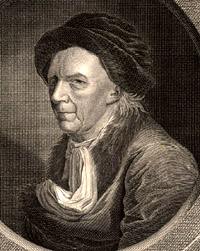- About MAA
- Membership
- MAA Publications
- Periodicals
- Blogs
- MAA Book Series
- MAA Press (an imprint of the AMS)
- MAA Notes
- MAA Reviews
- Mathematical Communication
- Information for Libraries
- Author Resources
- Advertise with MAA
- Meetings
- Competitions
- Programs
- Communities
- MAA Sections
- SIGMAA
- MAA Connect
- Students
- MAA Awards
- Awards Booklets
- Writing Awards
- Teaching Awards
- Service Awards
- Research Awards
- Lecture Awards
- Putnam Competition Individual and Team Winners
- D. E. Shaw Group AMC 8 Awards & Certificates
- Maryam Mirzakhani AMC 10 A Awards & Certificates
- Two Sigma AMC 10 B Awards & Certificates
- Jane Street AMC 12 A Awards & Certificates
- Akamai AMC 12 B Awards & Certificates
- High School Teachers
- News
You are here
Did Euler Know Quadratic Reciprocity?: New Insights from a Forgotten Work - Introduction
Mathematicians are often interested in determining who was the first person to discover or prove an important mathematical concept or theorem. The more important the mathematics involved, and the more important the contenders, the more interesting the question. By this standard, the origin of Quadratic Reciprocity is one of the more interesting open questions in the history of number theory.
|
Leonhard Euler (1707-1783) (Source: Convergence Portrait Gallery) |
 |
The question of who first knew quadratic reciprocity has been written about in the past. Harold Edwards discussed the subject in 1983 [3]. After a careful study of one of Euler's most important papers on quadratic forms and an earlier letter to Christian Goldbach, Edwards came down on the side of Euler. Twenty-two years later, Ed Sandifer took up the question again, and disagreed, ceding credit to Carl Friedrich Gauss [15].
Part of the debate may rest on one's answer to the question “what does it really mean to know a mathematical theorem?” For the time being, we suggest the following tentative answer: Mathematician \(M\) knows theorem \(T\) if, when someone else states theorem \(T\) to her, she can reply “yes---I already knew that.” In this light we can make our question a bit more precise: if Euler had (magically) come across a modern statement of quadratic reciprocity, would he have nodded, unsurprised? Or would he have learned something new?
For most such questions in number theory, we would immediately turn to Leonard Dickson's History of the Theory of Numbers [2]. Written in the early twentieth century, Dickson's work stands as the definitive compilation of the history of number theory before his time. There is, however, one significant topic missing from his history: quadratic reciprocity. Dickson's exclusion of quadratic reciprocity is an interesting story in itself (see [9]); for our purposes, we simply note that in the absence of a definitive history, we shall have to work a bit harder to come to our own conclusions.
In their respective papers, both Sandifer and Edwards cited a letter from Euler to Goldbach and Theoremata circa divisores numerorum in hac forma \(paa \pm qbb\) contentorum (E164) [4], Euler's best-known and most important work on the subject. Over the rest of his career, however, Euler wrote several papers on related topics. One of these (E744) [7] appears to have been totally neglected by historians. We have recently completed a translation of E744, and in this paper, we use the new information contained therein about Euler's number theory near the end of his life to contribute to the debate about Euler and quadratic reciprocity.
Paul Bialek (Trinity International University) and Dominic W. Klyve (Central Washington University), "Did Euler Know Quadratic Reciprocity?: New Insights from a Forgotten Work - Introduction," Convergence (February 2014), DOI:10.4169/convergence20140201




